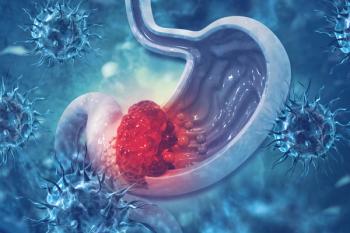
Eczema Incidence Associated With Dietary Calcium Intake
Key Takeaways
- Eczema affects 31.6 million in the US, with atopic dermatitis being a common subtype. It involves impaired skin barrier function and abnormal immune responses.
- The study found a significant association between moderately high dietary calcium intake and increased eczema risk, particularly in postmenopausal women and non-Hispanic White patients.
Increased eczema risks in certain populations were associated with moderately high calcium intake, although pregnant women were found to potentially benefit from higher calcium consumption.
Eczema incidence appeared to be more common among patients who had a moderately high level of calcium intake, suggesting correlations between certain nutrient levels and the development of skin conditions, according to a study published in
About 31.6 million people living in the US are diagnosed with a form of eczema, one of the most common subtypes being
Eczema has a complex etiology and pathogenesis; the exact cause is still unknown but involves genetics, immunity, environment, and psychology.1 Research has linked eczema with impaired skin barrier function, abnormal immune responses, microbial infections, and environmental factors.
Specific nutrient deficiencies are believed to have an impact on eczema development. For instance, calcium is an important mineral that maintains skin barrier function and the differentiation of keratinocytes. Calcium deficiencies can lead to rashes, eczema, urticaria, and folliculitis.
The cross-sectional study further investigated the association between dietary calcium intake and eczema because the relationship is inadequately explored. Data were extracted from the National Health and Nutrition Examination Survey conducted by the CDC between 2005 to 2006.
There were 4086 adult participants in the study comprised of 46.9% men and 53.1% women, with a mean age of 46.7 years. About 7.6% of the population was diagnosed with eczema. Participants were divided into 4 groups based on dietary calcium intake (Q1, < 496 mg; Q2, 496 mg-770 mg; Q3, 770 mg-1151.5 mg; Q4, > 1151.5 mg).
More participants with eczema were observed in the Q3 group (74 cases) compared with the Q1 group (66 cases), which had the lowest distribution of participants with eczema. Across women of all age groups, calcium intake was less than the suggested intake level (P < .05). Men aged 25 to 65 years had higher calcium intake compared with the recommended level, whereas men older than 65 years had lower calcium intake than the suggested amount (P < .05). Postmenopausal women between ages 50 and 65 years had the highest incidence rate of eczema.
A logistic regression analysis analyzed the link between dietary calcium intake levels and eczema incidence. In an adjusted model, the Q3 group compared with the Q1 group was associated with an increased prevalence of eczema (OR, 1.890; 95% CI, 1.033-3.458; P = .040). Further adjustments found significant links between the Q3 group and eczema (OR, 1.913; 95% CI, 1.024-3.576, P = .043).
An inverted U-shaped association between dietary calcium intake and eczema was indicated by the restricted cubic spline curve. The findings suggest several significant associations between increased dietary calcium levels and eczema risk within specific populations. Postmenopausal women (OR, 4.382; 95% CI, 1.596-12.031; P = .007), women older than 65 years (OR, 3.934; 95% CI, 1.068-14.489; P = .041), and non-Hispanic White individuals (OR, 2.449; 95% CI, 1.270-4.724; P = .011) exhibited a significantly increased risk of eczema if they had increased dietary calcium intake.
This association was also observed in individuals without diabetes (OR, 2.142; 95% CI, 1.253-3.663; P = .008) and those with asthma (OR, 2.546; 95% CI, 1.035-6.259; P = .043).Among lifestyle factors, nonsmokers (OR, 2.002; 95% CI, 1.153-3.476; P = .017), former drinkers (OR, 4.429; 95% CI, 1.219-16.094; P = .027), and light drinkers (OR, 2.964; 95% CI, 1.125-7.805; P = .030) showed a higher likelihood of developing eczema if they had higher calcium intake. Interestingly, increased dietary calcium intake was associated with a decreased risk of eczema in pregnant women (OR, 0.176; 95% CI, 0.042-0.731; P = .030).
The study design limits the results because it does not allow for causal inferences and there is potential for participant recall bias. Data may not have fully captured long-term dietary intake patterns because it was based on single time points. The survey did not provide comprehensive information on calcium intake from supplements.
These findings indicate that some populations may see benefits from reducing calcium intake to lower the risk of allergic flare-ups. “These findings highlight the need to consider the sensitivity of different populations to calcium intake when developing individualized dietary recommendations for the effective prevention and management of allergic diseases such as eczema,” study authors concluded.
References
- Wu Q, Guo Z, Zhang N, Dong D. Correlation between dietary calcium intake and eczema in American adult population. Sci Rep. 2024;14(1):31270. doi:10.1038/s41598-024-82723-x
- Eczema statistics. Allergy & Asthma Network. Accessed January 13, 2025.
https://allergyasthmanetwork.org/what-is-eczema/eczema-statistics/ - Eczema in adults and children. Cleveland Clinic. October 25, 2022. Accessed January 13, 2025.
https://my.clevelandclinic.org/health/diseases/9998-eczema
Newsletter
Stay ahead of policy, cost, and value—subscribe to AJMC for expert insights at the intersection of clinical care and health economics.







































